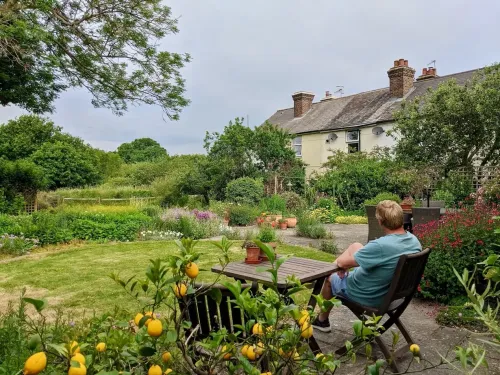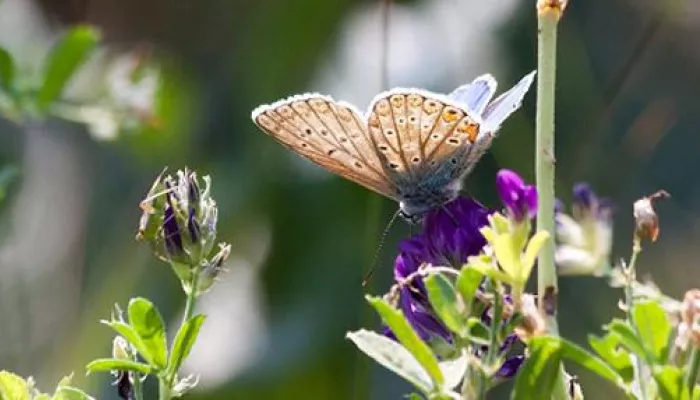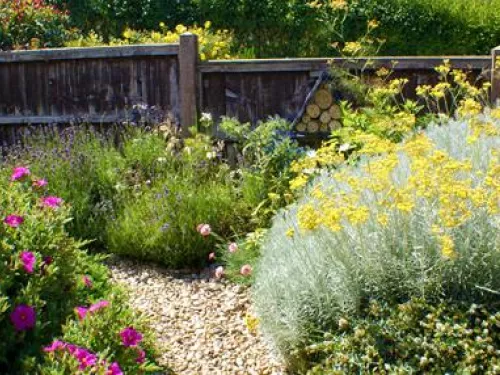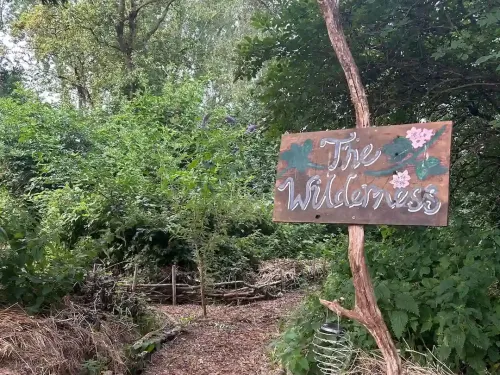
How to create a garden for people and wildlife
Volunteer Wild About Gardens Advisor Penny Brook takes us on a journey through her garden to share how they create a flower-filled haven for both people to relax and wildlife to flourish.

| Butterfly | Food plant for caterpillar |
|---|---|
| Meadow brown, hedge brown, marbled white, large skipper | Grasses including meadow grass, false brome, cocksfoot, Yorkshire fog |
| Large and small white | Wild/cultivated cabbages |
| Green veined white, orange tip | Lady’s smock, hedge garlic, hedge mustard |
| Brimstone | Alder buckthorn, purging buckthorn |
| Common blue | Bird’s foot trefoil |
| Painted lady | Thistles |
If your garden is a butterfly paradise, we’d love to hear from you. Share your garden butterfly photos with us on Twitter and Facebook, and let us know your favourite butterfly plants.
Why not consider taking part in our Wild About Gardens Awards 2017? It’s free to enter and anyone who has, or is developing, a wildlife-friendly garden in Kent is welcome to take part, however large or small their plot and whether they are a business, community group, school, college, allotment, private garden or even a collection of adjoining gardens.
For more information, visit our Wild About Gardens Awards page.

Volunteer Wild About Gardens Advisor Penny Brook takes us on a journey through her garden to share how they create a flower-filled haven for both people to relax and wildlife to flourish.

Wild About Gardens Officer Ellen Tout shares how we can all turn our gardens into wildlife havens with these top tips.

This blog about garden wilding is written by Sally Edge, the owner/founder of Langdon Court, where we will host an open garden for the third time in 2025!